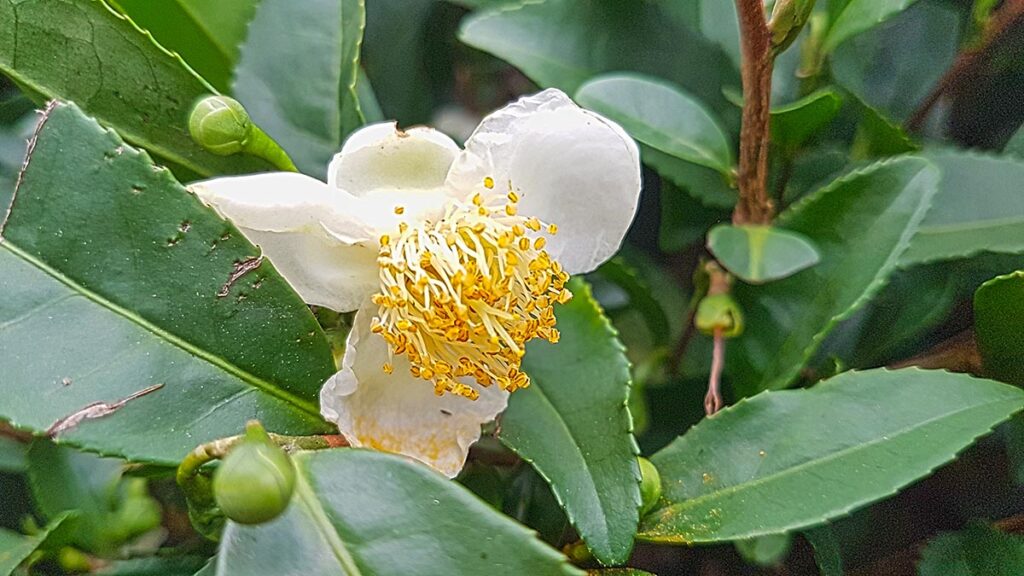Today is International Tea Day! Some may remember that this day is celebrated on December 15 and they won’t be wrong. In 2019 on the recommendations of India, the United Nations (UN) declared May 21 as International Tea Day. The reason is that the season of quality green tea production starts in May in most of the countries (that produce tea) and according to the UN this will help boost its production and consumption. They have also recognized the tea’s medicinal properties and cultural importance.
The ancient Chinese legend says that during a long search for edible greens and herbs in the forest, a farmer named Shunan Teng accidentally poisoned himself 72 times. But before the poisons could end his life the leaf drifted into his mouth. He chewed on it and it revived him.
Tea actually doesn’t cure poisoning but the story about Shunan Teng, the mythical chinese inventor of agriculture, shows the importance of tea in ancient China. Archeological findings show the tea was cultivated there as early as 6000 years ago. The original Chinese tea plant is the same type as the tea cultivated around the world today but it was originally consumed very differently. At first it was eaten as a vegetable or cooked with green porridge.
Tea became a drink some 1500 years ago when people realised that combination of heat and moisture can create a complex and very taste out of the leafy green. After hundreds of years of the variations preparation method the standard became to heat the leaf, pack it in the portable cakes, then ground it into powder, mix with hot water and create a beverage called matcha. Matcha became so popular that the distinct Chinese culture emerged.
Tea was the subject of the books and poetry, the favourite drink of emperors, medium for artists. Did you know that the artist would draw extravagant pictures in the foam of the tea very much like the expresso art that you can see today!
In the 9th century during the Tang dynasty a Japanese monk brought the first tea plant to Japan. Japanese eventually developed their own unique rituals leading to the Japanese tea ceremony. In the 14th century during the Ming dynasty the Chinese emperor shifted the standard from pressed cakes to loose leaf tea. At that point China still held the virtual monopoly on the world’s tea trees making tea one of the three essential Chinese export goods along with porcelain and silk. This gave China a great deal of power and economic influence as tea drinking spread around the world. That spread began in early 1600 when Dutch traders brought tea to Europe in large quantities. Many credit the queen Cathrine of Braganza, a portuguese noblewoman, for making tea popular with English aristocracy when she married King Charles II in 1661.

At the time Great Britain was in the midst of expanding its colonial influence becoming the new dominant world power. And as Great Britain grew interest in tea spread around the world. By 1700 tea in Europe was sold for ten times the price of coffee and the plant was still only grown in China. The tea trade was so lucrative that it started the intense competition between western trading companies. All were racing to bring their tea back to Europe first to maximise their profits.
At first Britain paid for all this chinese tea with silver. When that proved too expensive they suggested trading tea for another substance – opium. This triggered the public health problem within China as People became addicted to this drug and it all ended with opium wars between two nations.
The British East Indian Company also wanted to be able to grow tea themselves and further control the market. So they commissioned botanist Robert Fortune to steal tea from China in a covert operation. He disguised himself and took a journey through chinese mountains tea regions, eventually smuggling tea trees and experienced tea workers into Darjeeling, India. From there, plants spread further, helping drive tea’s rapid growth as an everyday commodity. Today tea is the second most consumed beverage in the world after water. Today there are almost as many ways of preparing the beverage as there are cultures on the globe.
But why so much fuss about tea? It’s not just good but healthy as well. Let’s just make sure that when we talk about tea, we talk about real (real!) tea Camellia Sinensis plant. The most consumed tea is the black tea, but the only difference between black and green tea is in the manufacturing process that is used. The green tea is not fermented while black tea undergoes a full post-harvest fermentation stage before drying and steaming. Other types of tea are white and oolong tea.
The green tea is of most interest to scientists as it contains higher levels of polyphenols and phytochemicals. In Chinese medicine green tea is often recommended for headaches, aches and pains, digestion, depression, detoxification, as an energiser and to prolong life in general. They drink it a few times during the day and after meals as it eases digestion.
Green tea is interesting for athletic performance. Some research looked for effects of the green tea on fat oxidation and body weight. Tea can apparently boost exercise endurance. Some studies have found that the catechins (antioxidants) in green tea extract increase the body’s ability to burn fat as fuel, and in combination with caffeine (found in all types of tea) it can produce that thermogenic effect. Of course, don’t expect miracles just by drinking tea, exercise and eat healthy!
If you have green tea, don’t throw away the green leaves. It is completely safe to eat them.
So, let’s now all enjoy a cup of tea!